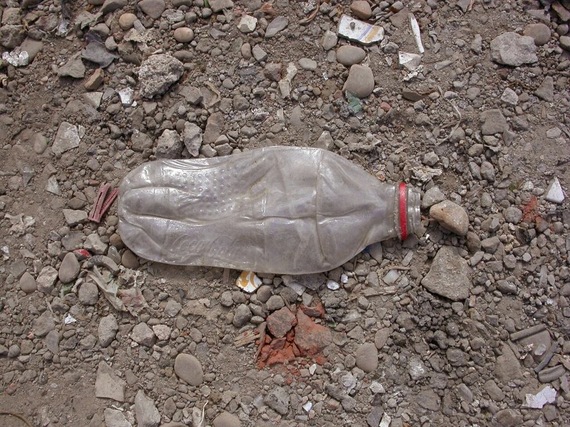By Ian Stark
Plastic will cover an increasing amount of the Earth's surface by mid-century, while steadily mixing into the ground and oceans, researchers from the University of Leicester, UK report.
A new study, "The geological cycle of plastics and their use as a stratigraphic indicator of the Anthropocene", published in the journal Anthropocene, proposes how humans have moved into the Anthropocene period -- a time when the Earth's ecosystem and geology are directly affected by human activity -- and how the planet's exterior has been altered by human-produced materials.
University of Leicester's Jan Zalasiewicz, Professor of Paleobiology from the Department of Geology is the lead author of the article, and explains to Science Daily that "Plastics were more or less unknown to our grandparents, when they were children. But now, they are indispensable to our lives. They're everywhere -- wrapping our food, being containers for our water and milk, providing cartons for eggs and yogurt and chocolate, keeping our medicines sterile. They now make up most of the clothes that we wear, too."
According to the research, plastics are not only "evident in terrestrial deposits, they are clearly becoming widespread in marine sedimentary deposits in both shallow- and deep-water settings. They are abundant and widespread as macroscopic fragments and virtually ubiquitous as microplastic particles; these are dispersed by both physical and biological processes," as well as through the overall food chain.
Furthermore, the ocean transports plastics, sometimes via patches of garbage that float around the globe, sometimes sinking to the sea floor or washing up on beaches.
Professor Zalasiewicz also notes that such materials, poured into landfills over several years, become part of the sedimentary cycle -- even providing the ability to record natural history by preserving artifacts and other buried matter, creating "techno fossils."
"Once buried, being so hard-wearing, plastics have a good chance to be fossilized -- and leave a signal of the ultimate convenience material for many million years into the future. The age of plastic may really last for ages."
- Nacreous Clouds Light Up British Skies, Signal Our Doom
- NASA Shares 360° Image of Mars Made With Facebook's Oculus Rift Technology
- Tata Motors Names Car 'Zica,' Soon to be Renamed
- Apple Rumors Include New iPhone Plus iPad and Apple Watch Updates
- Should You Care About Hooti, the New Twitter/Snapchat Hybrid App?
Photos via University of Leicester

